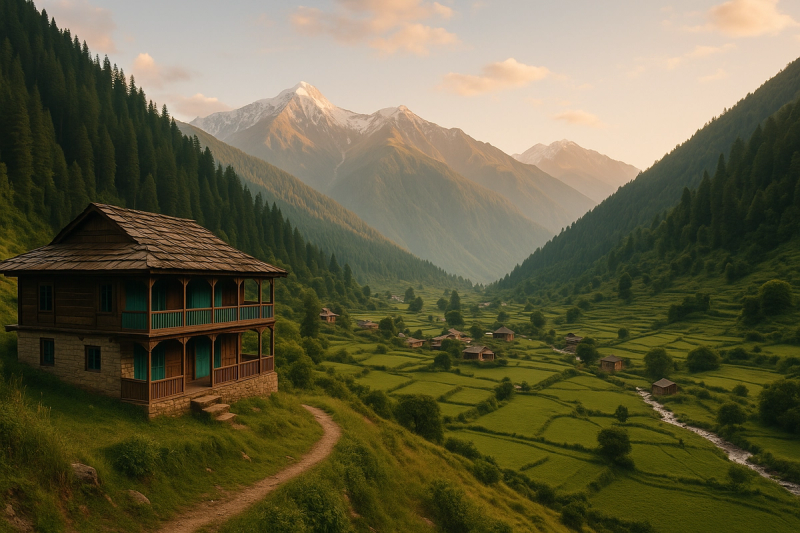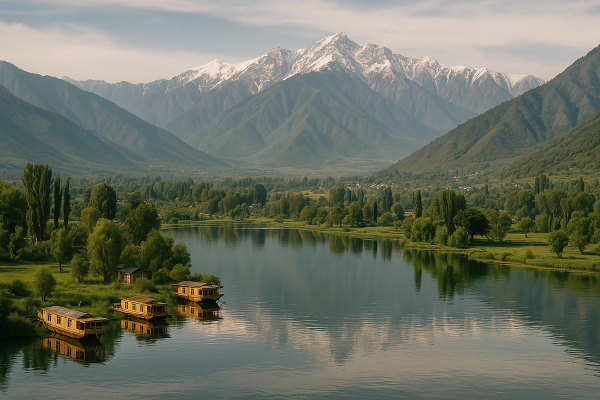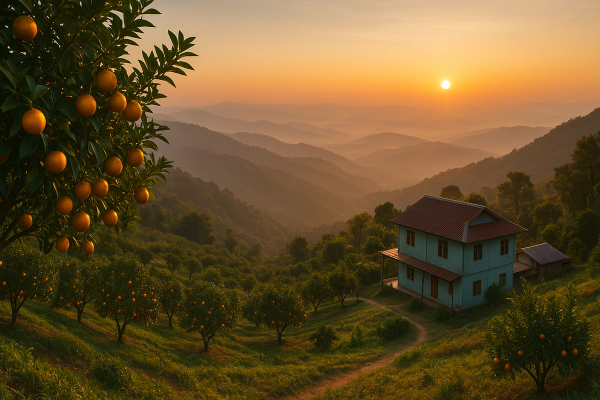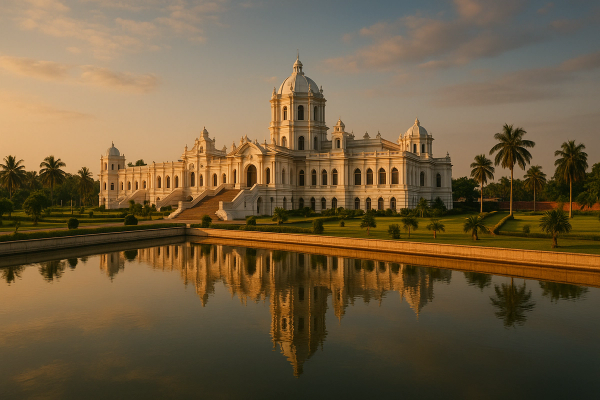Hidden Instagrammable Photo Spots in North India: Kashmir to Himachal (the real stuff, not the postcard version)#
So, um, I didn’t plan this like some big fancy content trip, yaar. I just packed my old Canon, a cracked phone screen, and went North. Kashmir first, then Himachal. I wanted those photos you scroll past on Insta and go—wait, where is THIS, I haven’t seen it in the standard reels. And honestly, I did find them. The kind of corners that don’t look curated. The vibe is… Kashmiri chinar leaves crunching under your shoes and Lahaul’s blue-blue sky making you feel, basically, tiny.¶
Kashmir: The frames that got lodged in my heart (and phone gallery)#
Everyone posts Dal Lake and Gulmarg Gondola right. Lovely. But the valley’s quieter pockets—those are the ones that, I swear, just sit with you. Also, it’s fairly safe for tourists now. You’ll see CRPF checkpoints, normal. Carry your ID always. Don’t push late-night drives in unfamiliar areas, and avoid shooting near military posts (common sense but we forget when light is good). Internet can be patchy outside Srinagar on some days—save offline maps, download playlists, and keep cash since UPI sometimes gives attitude.¶
- Aharbal Waterfall, Shopian: Stand on the mossy side trail just before the main viewpoint—mist sprays, teal water, stone textures. Wear grippy shoes. Go early morning when the sound is basically all you hear.
- Doodhpathri Meadows, Budgam: Rolling greens, pine shadows, a small wooden bridge near Shaliganga River. Even the sheep looked photogenic, I’m not kidding. Monsoon makes it lush but watch for slushy trails.
- Gurez Valley, Bandipora: Raw, cinematic. The old wooden houses in Dawar with stacked logs, and the Kishanganga river bends. Permits aren’t typically needed for Indian tourists now, but do check local advisories and don’t shoot towards border posts. Also, keep it respectful with locals—ask before portraits.
- Verinag Spring: The octagonal stone pavilion, reflections, quiet stillness. It’s one of those places that looks symmetrical without you trying too hard. Post-lunch light hits soft here.
Srinagar’s old city corners that made my camera happy#
If you’re skipping downtown Srinagar, don’t. There’s this slender blue mosque—Shah-e-Hamdan at Khanqah-e-Moula—carved wood, papier-mâché patterns, river right there. Early morning chai at a side stall, then shoot facades around Zaina Kadal. Narrow lanes, worn doors, someone polishing copperware. I got a portrait of an elderly man weaving kani shawl—not staged, just a smile and a small chat. Avoid blocking pathways and be gentle with lenses in crowds, me and him made that mistake and got a stern aunty look.¶
Season tip: Spring (March–April) gives you tulips at Indira Gandhi Memorial Tulip Garden—crowds are crazy when it opens but the edges of the garden have quieter rows. Autumn (late Sept–Nov) is chinar season… the reds and golds literally change the mood of the whole city. Winter snow is magic but roads can shut beyond Sonamarg and around higher passes, so watch official advisories. If you’re planning the Gondola in Gulmarg, book slots online and check same-day wind updates—phase closures happen, don’t be shocked. Prices fluctuate, just budget for it.¶
Now Himachal: Tucked-away frames from the valleys and high roads#
I crossed to Himachal with that typical Delhi overnight bus patience (and backache). Connectivity’s better in most towns, but the moment you go deeper, it’s again off-n-grid vibes. Personally, I liked that. Atal Tunnel changed the game for Lahaul—year-round access, faster than going over Rohtang. Big win if you want those clean blue skies in winter.¶
- Shangarh Meadows, Sainj Valley: Not exactly a secret anymore, but if you walk beyond the temple and sit under those deodars past sunset—the grass takes this dusky shade, and the village lights make a slow constellation. Bring a tripod, wind can be playful.
- Chehni Kothi near Jibhi: Old tower, slate roofs, stepped paths. Shoot it from the lower hamlet for scale and that layered look. Good shoes again—slippery stone trails. And don’t enter private courtyards, even if the door is very Insta.
- Tirthan Valley footbridges: Trout streams and wooden bridges, easy frames. Go mid-week off-season (April or October) and you’ll have a quiet river. There’s a footbridge near Ghadagi that gets that nice late-afternoon backlight.
- Barot Valley and Luhardi: Classic Himachal village textures. The Uhl river, cedar clusters, and those faded blue shopfronts. Sunrise in winter—breath fog becomes part of your shot, seriously feels like a film set.
- Lahaul’s Sissu Waterfall & beyond: The waterfall itself is popular now, but walk to the left trail and frame it with the prayer flags and wide valley. If you’re feeling mildly ambitious, look up Ghepan Lake trek (near Tandi)—fluorescent turquoise, but season dependent and needs fitness + a local guide. Don’t go solo without experience.
Spiti note: Summer (mid-June to Sept) is easier for roads. Winters are hardcore and beautiful but I won’t sugarcoat—minus temps, frozen pipes, and limited rooms with heating. Kibber, Kaza, Langza all look epic, offcourse, but I tried to shoot Dhankar Lake at sunrise and basically nearly froze my fingers because I forgot hand warmers. If you go, layer up, carry power banks, and don’t be that person stepping on barley fields for a ‘creative angle’.¶
Transport and stay: what actually worked for me#
Delhi to Srinagar flights are frequent, watch fares around INR 5k–9k one way, fluctuate with season. For Himachal, Volvo buses (HRTC, private) to Manali/Dharamshala are like INR 1200–1800 depending on timing. In-valley travel? Shared cabs are normal, try to pool. For deeper pockets (Gurez, Pangi), local Sumo drivers know the roads best—worth the extra spend.¶
Stay wise: homestays in Himachal (Sainj/Tirthan/Barot) range INR 800–2500 per night for decent rooms; boutique stays INR 3500–7000. In Kashmir, houseboats on Nigeen are quieter than Dal and range around INR 2500–6000 depending on the view and food included. In Srinagar old city, some heritage guesthouses are popping up—ask for heating details in winter and backup power because outages are a thing. Always confirm with the host about network and the nearest medical assistance; not to scare you, it’s just practical.¶
- Golden photo tip: start stupid-early. Like before sunrise. You get empty lanes, warm light, fewer awkward photobombers.
- Carry a 35mm or 50mm if you like human-scale. For mountains, a 24mm is perfect. Don’t overpack lenses—you’ll regret it on steep trails.
- Shoot wide, then get closer. I did the opposite and missed layers. Also, always do a quick dust wipe—Himalayan wind is dust’s best friend.
- Ask. Every time. Portraits especially. A smile and a small chat, even in broken Hindi, gets you better frames than any "can I click?" bark.
Food that accidentally became my mood board#
Kashmir: Noon chai with kulcha—pink, salty, addictive. Wazwan places can be heavy but—gushtaba, rista, yakhni—rich frames, rich flavours. Try nadru (lotus stem) fries by the lake, and winter harisa if you’re around Jan–Feb, slow-cooked, warms your bones. Keep it simple, don’t over-order, portions are deceptive. Himachal: siddu, sepu badi, madra—those earthy plates look so good with wooden textures. Tirthan trout, lightly grilled—goes with river shots, ha. In Spiti, thukpa and butter tea felt like a hug after wind bullied my face for hours. Pro tip: carry a steel bottle and ask for refills—people appreciate that eco thought.¶
Latest updates I actually used#
Atal Tunnel means easy winter access to Lahaul, but black ice is not your friend—check road status early morning. HRTC Twitter and district admins post reactive updates, and local WhatsApp groups help if your homestay host adds you. Kashmir tourism is actively organising events around spring and autumn—Tulip Garden opening dates get announced in late March usually. In 2025 I noticed more boutique stays and guided heritage walks in Srinagar’s downtown; safe in daytime, still, stay alert after dark. Drone flying is getting stricter both in Kashmir and Himachal—many zones are no-fly near borders and monasteries. Please check local rules; don’t get your gadget seized for a reel, not worth it.¶
Money bits: UPI works in towns, but remote valleys in Gurez, Pangi, higher Spiti—carry cash. Fuel stations thin out at night, top-up every time you spot one. If you’re self-driving, get a basic emergency kit—torch, tow rope, puncture repair. Also, a thermos for chai. Makes you friends fast.¶
There was this one evening in Sainj when the meadow turned amber and a dog followed me to the temple steps. I clicked nothing for ten minutes, just watched. Not every frame needs a shutter—you know?
Hidden spots I’d go back for (and a few tiny warnings)#
Pangi Valley via Sach Pass is insane-beautiful, but it’s not beginner terrain. Open only when snow melts fully—ask local admins, and honestly go with a seasoned driver. In Kashmir, Bangus Valley feels dreamlike with those flat grasslands and pine walls. But mobile signal drops, and if weather turns, you want a plan B. In Himachal, walk off the tourist path in Sissu and Keylong—small monasteries like Kardang are quiet, monks are kind if you’re polite. Don’t photograph prayer interiors without permission, it’s just bad manners. Also: please don’t trample meadows for a drone shot. Double negative time—no one ain’t gonna like that, truly.¶
If you’re on a tighter budget, skip expensive curated photoshoots. Go morning-light, use local buses, and eat homestay meals. You’ll save cash and, somehow, your photos will feel more real because you’re not dragging a prop suitcase through a pine forest (we’ve all seen that reel). And carry snacks—peanuts, chikki, something. I get very cranky-creative when hungry and that never ends well.¶
Would I go back? Basically tomorrow#
Yeah. Kashmir’s bridges and Himachal’s meadows gave me more than images—slower breath, kinder conversations. It’s not perfect—road closures, rain tantrums, a power cut when you really need to backup. But the smaller, hidden angles make it feel yours. Watch the seasons, track local updates, keep it light, and let the valleys set your pace. If you find a new corner, share it gently. Don’t gatekeep but also don’t geotag exact fragile spots if it’ll harm them—use discretion.¶
Oh and btw, I drop more travel bits and unpolished notes on AllBlogs.in sometimes—if you’re planning North India and want honest tips (plus a few rants when buses get delayed), you’ll probably find something useful there.¶














